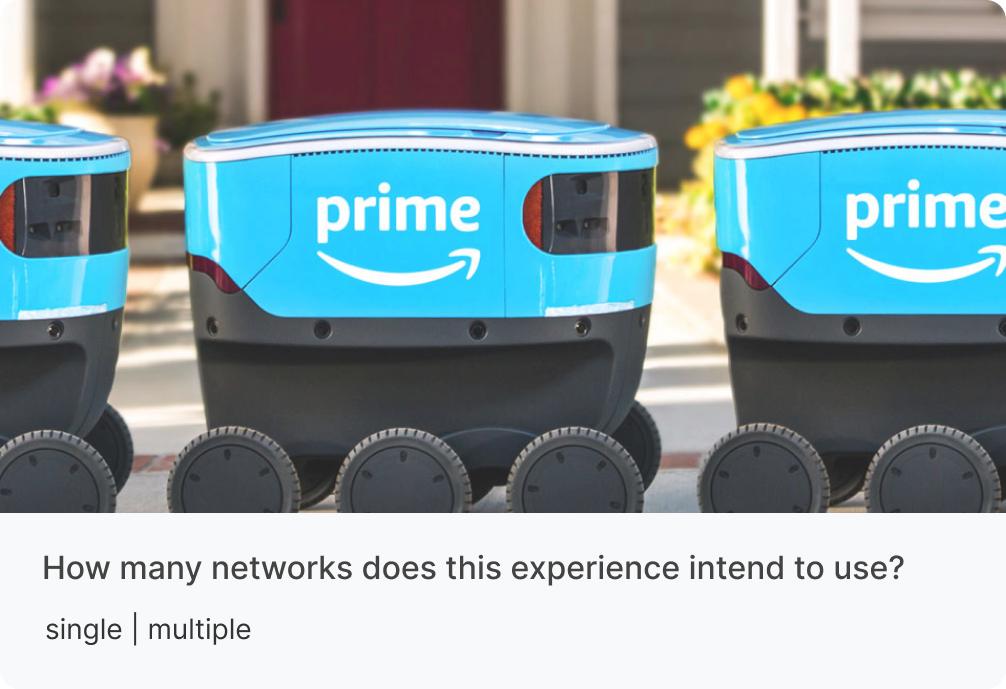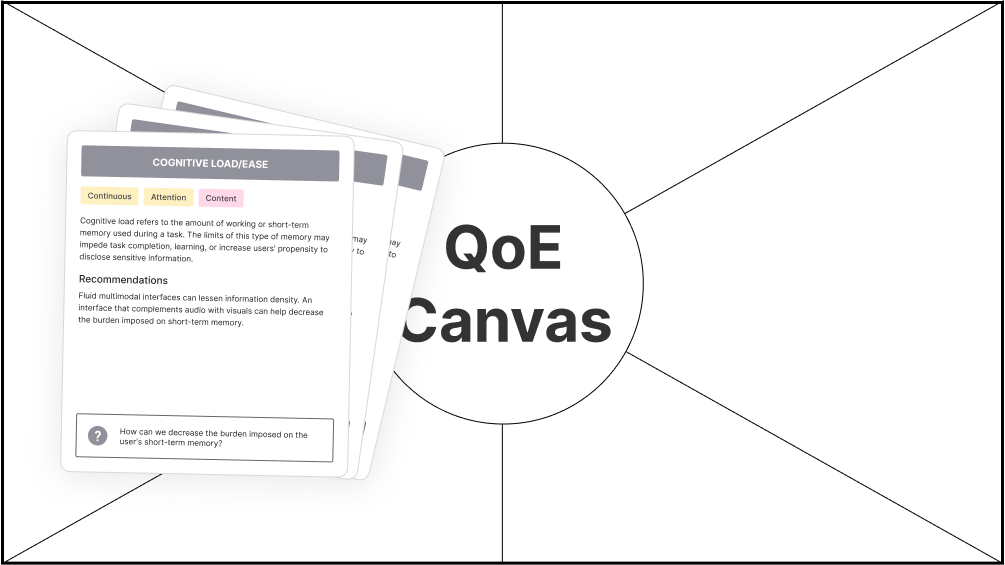
The QoE Framework To Lead the 6G Transformation With Humans At the Core
6G goes beyond faster internet capabilities. It lays a foundation of an interconnected set of entities with the humans at its core.
Grounded on the research, the 6G Quality of Experience Framework guides the analysis of possible 6G use cases based on people, context, technology, and the relationships between them.
– Our goal is to ensure that 6G, the next generation of wireless networking elevates existing human capabilities
The framework is composed of 5 sets of questions, a list of Quality of Experience factors with a canvas and a series of critical-thinking prompts that inspire human-centered conversations.
Before starting, your team has to define the application and who will be the stakeholders and actors you are trying to design for. Actors are the people who directly handle the technology; the users are the ones that interact with it on a daily basis. Throughout this activity, we encourage you to think of the needs of your user from a social and emotional point of view.
Once you have defined the user, you will be ready to start working your way through the framework.
For the first set of inquiries, consider the following and select one of the options. Questions about the activity can look like:

Keep in mind that sensitive data will increase user’s awareness and their need for perceived privacy, which is the belief in their ability to manage the release and dissemination of personal information.
The context refers to all the factors outside the application relevant to the interactions with it, the immediate environment, human intentions and actions, social norms, related technologies, etc. Analyzing context is crucial for technologies that respond to their surroundings, adapt to different places and times of use, and depend on multiple interconnected networks.
More specifically, operational context refers to the physical environment outside an application, and the resources it needs to function. This primarily includes environmental conditions but can also encompass spatial arrangements and infrastructure.
Research on operational context is important because it can inform engineering requirements, particularly in coping with remote natural environments and unreliable network service. Questions about the operational context can look like:

The context refers to all the factors outside the application relevant to the interactions with it, the immediate environment, human intentions and actions, social norms, related technologies, etc. Analyzing context is crucial for technologies that respond to their surroundings, adapt to different places and times of use, and depend on multiple interconnected networks.
More specifically, operational context refers to the physical environment outside an application, and the resources it needs to function. This primarily includes environmental conditions but can also encompass spatial arrangements and infrastructure.
Research on operational context is important because it can inform engineering requirements, particularly in coping with remote natural environments and unreliable network service. Questions about the operational context can look like:

The sociocultural context refers to the expectations people have for their own and others’ behaviors, comprising who or what enforces such expectations and what happens when these are violated.
Sociocultural questions will ask you to examine the reasons why we do some things and not others, specially in public. How groups of people find similar meanings in things and events, and how those shared meanings might vary across different groups also informs the sociocultural context. Research transforms tacit norms into concrete terms, which can inform engineering requirements and help mitigate self-consciousness and leverage social connection. Questions about the sociocultural context can look like:

The technological context refers to the ecosystem that an application is a part of. In other words, this is the the network of economic relationships that position technologies in a larger world.
We do research into the technological context to make sure that third parties that make a product or service successful are taken into account. These can inform engineering requirements, particularly in designing for interconnectivity and data security. Questions about the technological context can look like:

Upon answering these questions, the framework will populate a list of crucial Quality of Experience (QoE) factors that matter for the use case. These factors contain a description, recommendations, and thought-starter inquiry to lay the ground for the next phase of the framework.
Along with the list, the framework also generates a five-section canvas displaying the selected answers to the questions in the form of tags. At its center lay the QoE factors, which you and your team should regard as the fundamental metrics that will define the level of satisfaction that users experience when interacting with the application.

Critical thinking is one a fundamental human ability that can never be replaced by artificial intelligence. In this section, your team will discuss the measures that InterDigital can implement to address the impact of the application on the user’s life, including potential blind spots and any unintended consequences.
Implementing a human-centered perspective in an organization may provoke profound changes and cannot happen without a clear action plan. To build trust and facilitate acceptance of the new framework, it is critical that you take the time to consider how processes will be reimagined, and how you will communicate the human value proposition to your clients. A critical thinking prompt can look like:
How is the network and infrastructure supporting application safety?